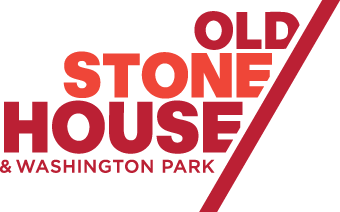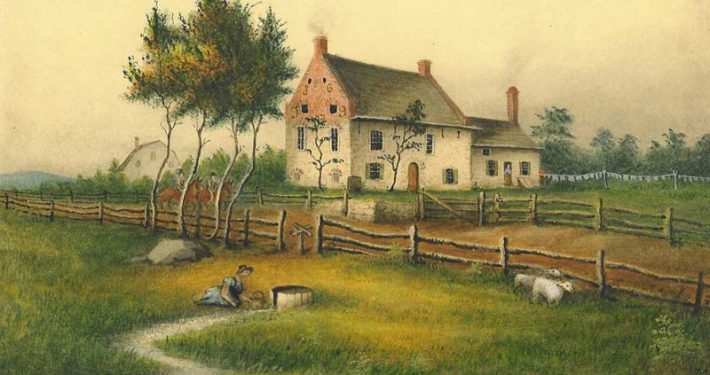The Old Stone House site was once adjacent to the Lenape town of Marechkawick on the banks of the Gowanus Creek. Hundreds of people lived at Marechkawick. They grew corn and other crops in the rich soil surrounding the Gowanus.
European settlers began purchasing land near the Gowanus from the leaders of Marechkawick and other Lenape towns in 1636. When Dutch West India Company Director Wilhelm Kieft ordered attacks on unarmed Indigenous visitors at Pavonia and Corlears Hook in February 1643, Marechkawick and other Lenape forced the Europeans back onto Manhattan. Two and half years later, in August 1645, European troops retook the area. With “Kieft’s War” over, these settlers founded Breukelen in March 1646 on top of Marechkawick.
The Vechte family came to New Amsterdam from the Netherlands in 1660. Hendrick Claessen Vechte commissioned the Old Stone House in 1699 on lands his father purchased along the Gowanus decades earlier. Hendrick was a wealthy man and served as Justice of the Peace for Brooklyn. His son Nicholas Vechte was born at the Old Stone House in 1704, living at the farm until his death during the Revolutionary War.
Like many of their neighbors, the Vechtes enslaved generations of people of African descent. These enslaved people did most of the work on the Vechte farm. They raisied grains, fruits, vegetables, oysters, and cattle for sale. They did most of the cooking and cleaning and kept the hearth fires going through long cold nights. When the Continental Congress declared independence from Great Britain in 1776, more enslaved people lived at the Old Stone House than free.
After the Revolutionary War, the Vechtes sold the farm to the Cortelyou family. The Cortelyous then sold it to Park Slope developer Edwin Litchfield in 1852.
– Dylan Yeats, Ph.D.
We went upon several plantations [in Gowanus] where…the people…made us very welcome, sharing with us bountifully whatever they had…. It is impossible to tell how many peach trees we passed, all laden with fruit…. We found Gouanes oysters, which are the best in the country…. They are large and full, some of them not less than a foot long….
From the September 1679 entries of the
Journal of Jasper Danckaerts
Image: Brooklyn Historical Society.

